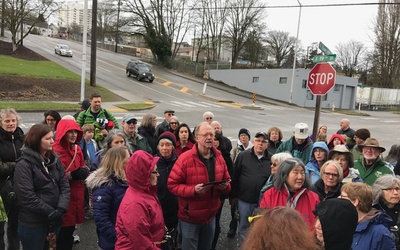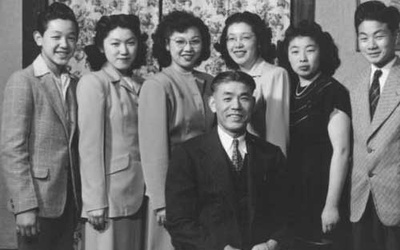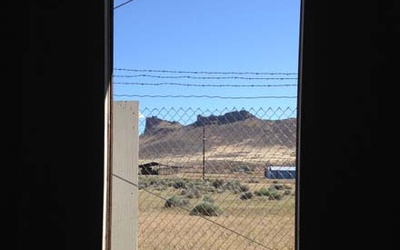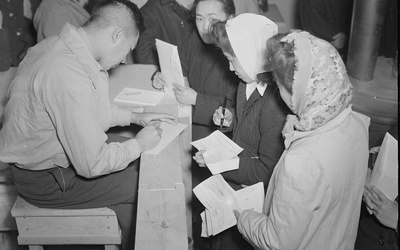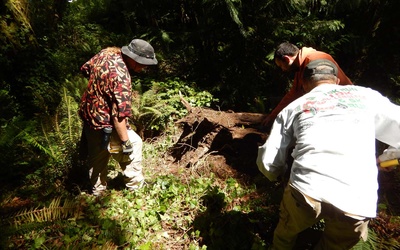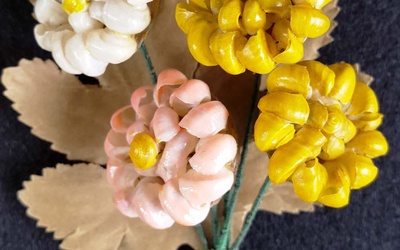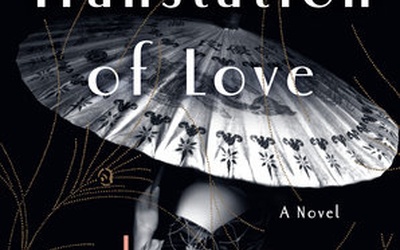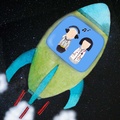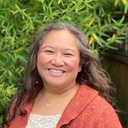
Tamiko Nimura
@tnimuraTamiko Nimura is an Asian American writer living in Tacoma, Washington. Her training in literature and American ethnic studies (MA, PhD, University of Washington) prepared her to research, document, and tell the stories of people of color. She has been writing for Discover Nikkei since 2008.
Tamiko just published her first book, Rosa Franklin: A Life in Health Care, Public Service, and Social Justice (Washington State Legislature Oral History Program, 2020). Her second book is a co-written graphic novel, titled We Hereby Refuse: Japanese American Resistance to Wartime Incarceration (Chin Music Press/Wing Luke Asian Museum). She is working on a memoir called PILGRIMAGE.
Updated November 2020
Stories from This Author
What Remains: A Tour of Tacoma's Japantown
March 21, 2017 • Tamiko Nimura
“Well, if we get about ten or fifteen people,” said my colleague Michael Sullivan, “that’ll be a good group. And it’s supposed to rain, so who knows who will show up?” For a few years, Michael and I had been working on telling bits and pieces of Japanese American history separately (including blog posts, personal essays, an encyclopedia article) and together, on a joint project about the history of the Lorenz Building near the center of downtown Tacoma. But we’d …
The Story of One Tacoma Issei, Shuichi Fukui: Journalist, Historian, WWI Veteran
Feb. 14, 2017 • Tamiko Nimura
As I’m writing this essay, I have moved between the despair I mentioned last month and the hope that I have for the future. My daughters went to their first protest march; my oldest daughter made her first call to a senator without being prompted or asked. Living in Washington State, as we do, it’s hard not to feel despair, as I did this morning when I read that a newspaper in Kennewick, Washington published an editorial defending the logic …
Camp History Is Not Bound By Time: Allegiance, Fighting for America, The Betrayed
Jan. 16, 2017 • Tamiko Nimura
Manzanar has no geographic boundaries and is not bound by time. Manzanar exists today … in many forms, in many places. And in each, the people must work together to insure that it will not go unnoticed and unchanged. — Mike Murase, GIDRA, 1973 I am thinking about history and silence again. It’s possible that …
The Work and the Way Forward: A Tapestry of Post-Election Reactions from Seattle-Area Nikkei
Dec. 6, 2016 • Tamiko Nimura
These last several weeks after this year’s presidential election, I have grieved for my community, one that is made up largely of people from a variety of marginalized and minority communities. Friends who are Asian Americans, African Americans, Latinos/as, Native Americans. Friends who are gay and lesbian and bisexual and transgendered and queer, some of whom have been through attempts at “conversion therapy.” Friends who are Muslim, Jewish, Buddhist, Christian, atheist. Women who are survivors of domestic abuse, rape, sexual …
Uncovering a “Lost” Japanese American Village in Bainbridge Island, Washington: A Behind the Scenes Interview with Archaeologist Floyd Aranyosi
Nov. 21, 2016 • Tamiko Nimura
Readers here may already be familiar with the fascinating story of Yama and Nagaya, a Japanese sawmill village settlement on Bainbridge Island, Washington. From 1883 to the 1920s, Japanese pioneers created a village complete with houses, churches and temples, a grocery store, laundries, a hotel, and even a photo studio. The village closed when the sawmill closed, and until recently the site has been left largely undisturbed. Floyd Aranyosi is a faculty member at Olympic College in Bremerton, and is …
Handmade In Camp: A Museum Pays Tribute to Nikkei History in Auburn, Washington
Oct. 6, 2016 • Tamiko Nimura
Cherry blossoms made out of tiny white shells. A handcarved wooden vase. A Japanese doll in kimono. These are some of the artifacts in Handmade in Camp: What We Couldn’t Carry, now on display in the White River Valley Museum in Auburn, Washington through November 6, 2016. The artifacts were handmade by incarcerated Japanese Americans during World War II, from found and scavenged materials. The cherry blossoms are made from the shells found in abundance around the Tule Lake site. The …
Tacoma’s Nihonmachi Is in the Heart
Sept. 2, 2016 • Tamiko Nimura
“What are you working on now?” my hairdresser asks me. We’ve seen each other for years, and she knows about my writing projects. “I’m working on an essay about Tacoma’s Japantown,” I say. She stops with the comb and scissors still in her hands. Pieces of my hair are already scattered on the floor. She looks puzzled, and I add quickly, “which doesn’t really exist anymore.” “Oh, good, I’m glad you said that,” she says. “I was so confused. Because …
Bringing the Worlds of Nihonjin and Nikkeijin Together: An Interview with Lynne Kutsukake
July 25, 2016 • Tamiko Nimura
A Japanese schoolgirl with an older sister who goes missing. A Japanese Canadian classmate who is willing to help the first girl with her search by writing a letter. A Japanese American Nisei translator working under General MacArthur who reads their letter and decides to take action. The lives of these characters (and more) intersect in the post-WWII occupied Tokyo of Lynne Kutsukake’s novel, The Translation of Love (2016). It’s a book that skillfully gathers disparate characters under the profound …
Wabi-Sabi Stitches: Sanae Ishida’s Path to Sewing Happiness
May 11, 2016 • Tamiko Nimura
“I’d like to think that this isn’t your typical sewing book,” says Nikkei author Sanae Ishida in her latest book, Sewing Happiness: A Year of Simple Projects for Living Well. The book chronicles her path from exhaustion and illness resulting from overwork to a “real, joyful, unpolished, but meaningful” life. For fans of Ishida’s children’s book Little Kunoichi, this second book may come as a bit of a surprise; it’s part memoir, part “lookbook” for sewing inspiration, and part instruction …
For the Sake of the Ancestors and the Children: The “Small But Mighty” Work of the Camp Harmony Committee
April 7, 2016 • Tamiko Nimura
Every September, thousands of people “do the Puyallup.” For Washington State residents it’s an opportunity to visit the State Fairgrounds, ride the rollercoasters, listen to concerts, and eat scones with raspberry jam. For other visitors, including the Camp Harmony Committee (CHC), the memories and associations with the site are not always so pleasant. During World War II, the site housed over seven thousand Japanese Americans, serving as a detention center for Nikkei evacuated from Alaska, Seattle, Tacoma, and surrounding rural …

